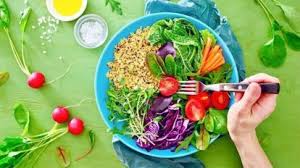India’s top 5% cut down on calories in 2023-24, gap with bottom 5% narrows

In a significant shift in India’s nutritional landscape, new government data reveals that the country’s top 5% income earners have reduced their daily calorie intake in 2023–24, while the bottom 5% have seen a modest but meaningful rise. This unexpected trend signals a subtle rebalancing in dietary consumption across income groups, offering a nuanced picture of food access and evolving health awareness.
🔍 What the Data Says
The Ministry of Statistics and Programme Implementation (MoSPI), in its latest release based on the Household Consumption Expenditure Survey (HCES), highlighted a narrowing calorie gap between India’s richest and poorest households.
- Among rural households, the top 5% saw their average daily per capita calorie consumption fall from 3,116 kilocalories in 2022–23 to 2,941 kcal in 2023–24.
- For urban households, the top tier dropped even more sharply—from 3,478 kcal to 3,092 kcal.
In contrast, the bottom 5% of rural Indians increased their intake from 1,607 kcal to 1,688 kcal, while the urban poor moved up from 1,623 kcal to the same 1,688 kcal mark.
This has effectively narrowed the calorie consumption gap. In rural areas, the poorest now consume about 57% of what the richest do, up from about 52% previously. In urban India, the gap is now around 55%, a small but noteworthy improvement.
🧠 Why Is This Happening?
Several factors may be driving these shifts—both economic and behavioral.
1. Health-Conscious Urban Elites
One key reason for the drop in calorie intake among the top 5% could be the rise of health-conscious dietary habits. As more affluent Indians gain access to nutritional information and wellness trends, they’re shifting toward lower-calorie, protein-rich, and plant-based diets.
With fitness tracking, personalized diet plans, and lifestyle diseases like diabetes and obesity on the rise, wealthier households may be deliberately cutting back on calorie-dense foods, particularly refined carbohydrates and fats.
2. Improved Access for the Poor
The increase in calorie consumption among the poorest sections likely reflects the success of government welfare programs, such as:
- PM Garib Kalyan Anna Yojana, which provided free grains during and after the pandemic;
- Expanded Public Distribution System (PDS) coverage;
- Employment schemes like MGNREGA, boosting rural incomes;
- Rising direct benefit transfers and subsidized food access.
This combination of targeted welfare and improved delivery has meant more consistent access to basic staples for marginalized groups.
3. Urban-Rural Nutritional Shifts
Interestingly, rural diets have seen a rise in fat intake, up to 65.1 grams daily, even as protein and overall calories remained modest. Meanwhile, urban areas saw a slight drop in fat intake, from 77.4 grams to 76.9 grams.
This suggests that while the poor are consuming more, they may also be leaning towards more processed or high-fat foods—a double-edged sword that raises concerns about long-term health outcomes.
📉 National Average Drops Slightly
Despite the gains among the poor, India’s overall average calorie intake declined slightly, from 2,407 kcal in 2022–23 to 2,383 kcal in 2023–24.
This national decline is largely driven by reductions in consumption among the upper-middle and affluent classes, who continue to influence trends more heavily in urban areas. It also suggests a possible transition toward quality over quantity—with growing preference for foods that are nutrient-rich rather than calorie-heavy.
📊 The Bigger Picture: Calories ≠ Nutrition
While narrowing the calorie gap is a positive development, experts caution that calories alone do not equate to nutrition.
“It’s encouraging to see better food access among the poorest, but the quality of those calories matters even more. We need more data on micronutrients—iron, calcium, vitamins—and their distribution,” says Dr. Seema Rao, a public health nutritionist based in Delhi.
Indeed, rising fat intake without corresponding improvements in protein, fiber, and micronutrient consumption may point to the emergence of ‘hidden hunger’—where people eat enough, but not well.
🧩 Challenges Ahead
India still faces multiple challenges in its nutritional journey:
- Malnutrition remains prevalent, particularly among children and adolescent girls;
- Obesity and non-communicable diseases (NCDs) are climbing among urban adults;
- Double burden of undernutrition and overnutrition is growing in middle-income populations.
Government policy must now balance food security with nutritional quality, promoting not just quantity but diversity in diets—including fruits, vegetables, pulses, and animal proteins.
🌾 Policy Implications
The narrowing calorie gap reflects a moment of opportunity. Policymakers may consider:
- Strengthening mid-day meal programs and anganwadi nutrition schemes;
- Subsidizing nutritious staples like pulses, milk, and eggs;
- Creating awareness about balanced diets among both urban and rural populations;
- Supporting local food systems that enhance access to fresh produce.
✅ Conclusion
The reduction in calorie consumption among India’s top earners, coupled with a steady rise for the poorest, paints a cautiously optimistic picture. While the country still faces serious nutritional challenges, especially in micronutrient deficiency and child malnutrition, the latest data signals a potential turning point.
India’s food story is no longer just about ending hunger. It’s increasingly about reshaping diets, rethinking health, and rebuilding equity in what—and how—we eat.






